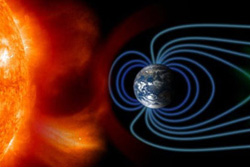F.A.Q.
Include on this webpage any frequently asked questions regarding your product or service. Optionally this page can also be used for any other page on your site like a testimonials or staff page, or to showcase projects your company has done.


- What is a simple definition of energy?
Scientists define energy as the ability to do work. Despite this confusing definition, its meaning is very simple: energy is just the force that causes things to move. Energy is divided into two types: potential and kinetic. Modern civilization is possible because people have learned how to change energy from one form to another and then use it to do work.
- What are the 9 types of energy?
The different types of energy include thermal energy, radiant energy, chemical energy, nuclear energy, electrical energy, motion energy, sound energy, elastic energy and gravitational energy.
- What are the 7 main forms of energy?
Our most common forms of energy are: mechanical, chemical, electrical, electromagnetic, thermal, sound and nuclear energy.
There is sometimes called a hidden energy...and that's sound.
- What is the most powerful energy?
As you can see, nuclear energy has by far the highest capacity facto r of any other energy source.
- What are the 3 basics of electricity?
There are three primary electrical parameters: the volt, the ampere and the ohm.
- Volts - The pressure that is put on free electrons that causes them to flow is known as electromotive force (EMF).
- Amperes (Amps) - The ampere defines the flow rate of electric current.
- Ohms - The ohm is the unit of resistance in a conductor.
- How does electricity flow?
Current flows from positive to negative and electron flows from negative to positive.
Current is determined by the number of electrons passing through a cross-section of a conductor in one second.
Current is measured in amperes, aka "amps".
- What is Ohm's law for dummies?
Ohm's Law is V = IR, where V = voltage, I = current, and R = resistance. Ohm's Law allows you to determine characteristics of a circuit,
such as how much current is flowing through it, if you know the voltage of the battery in the circuit and how much resistance is in the circuit.
- What is Ohm's law?
Ohm's Law is V = IR, where V = voltage, I = current, and R = resistance. Ohm's Law allows you to determine characteristics of a circuit,
such as how much current is flowing through it, if you know the voltage of the battery in the circuit and how much resistance is in the circuit.
